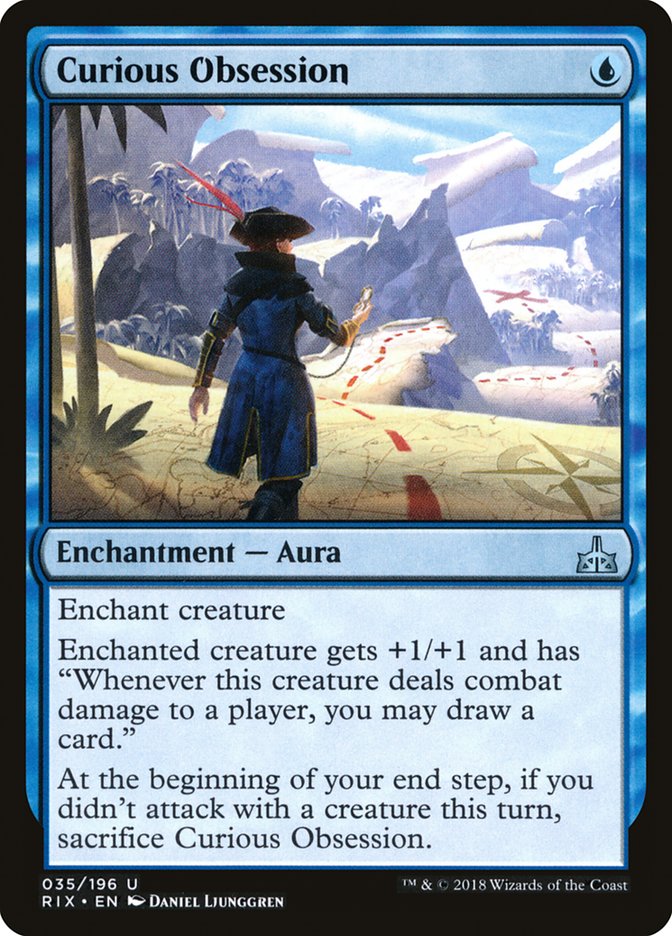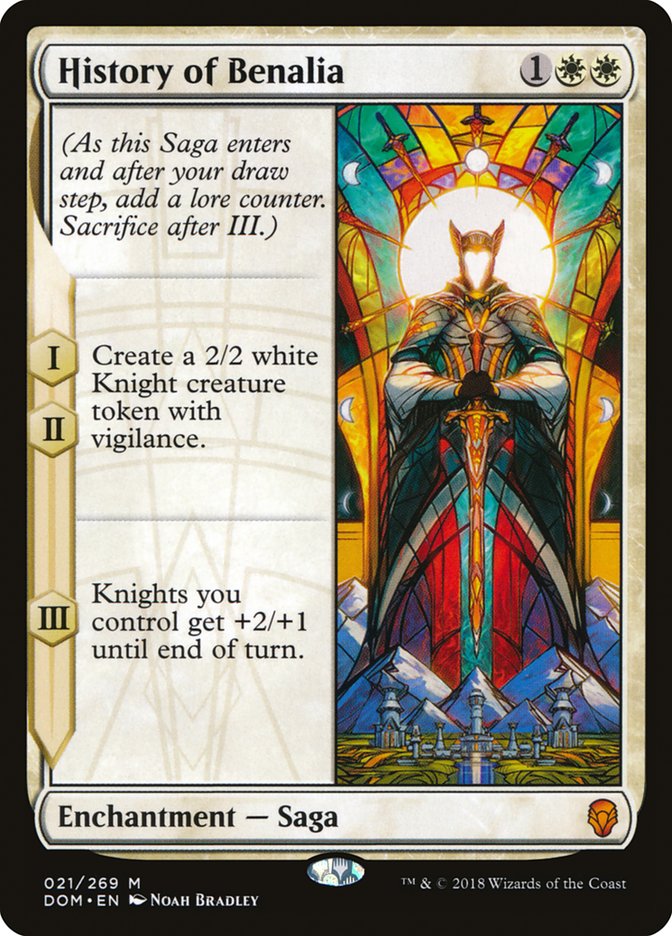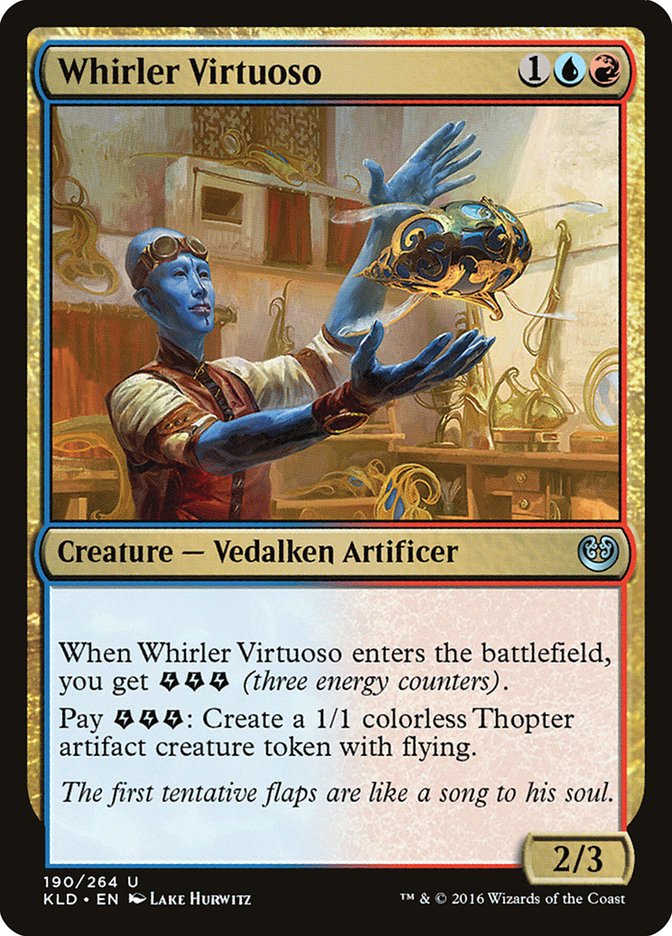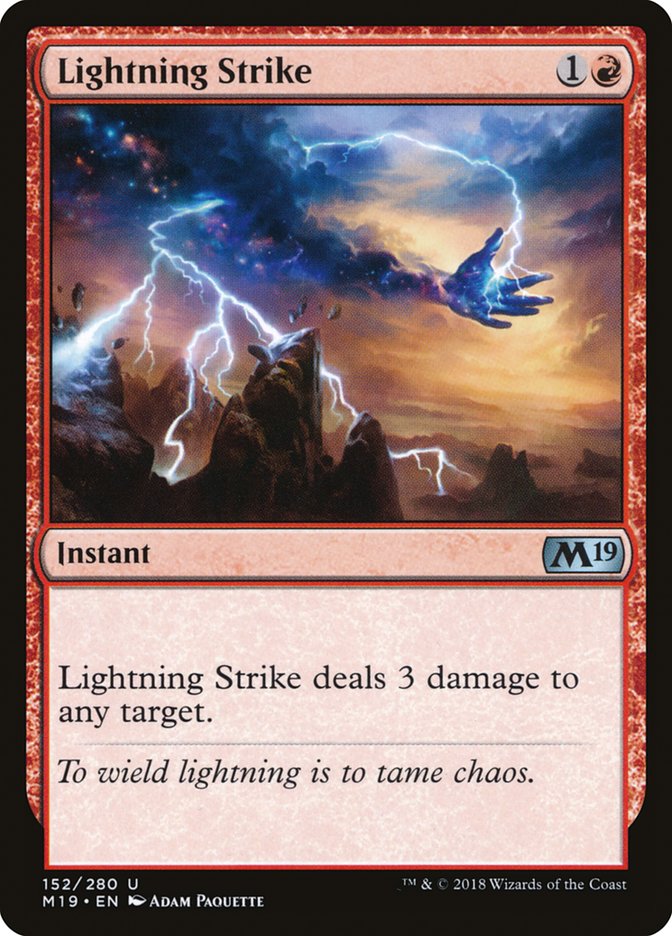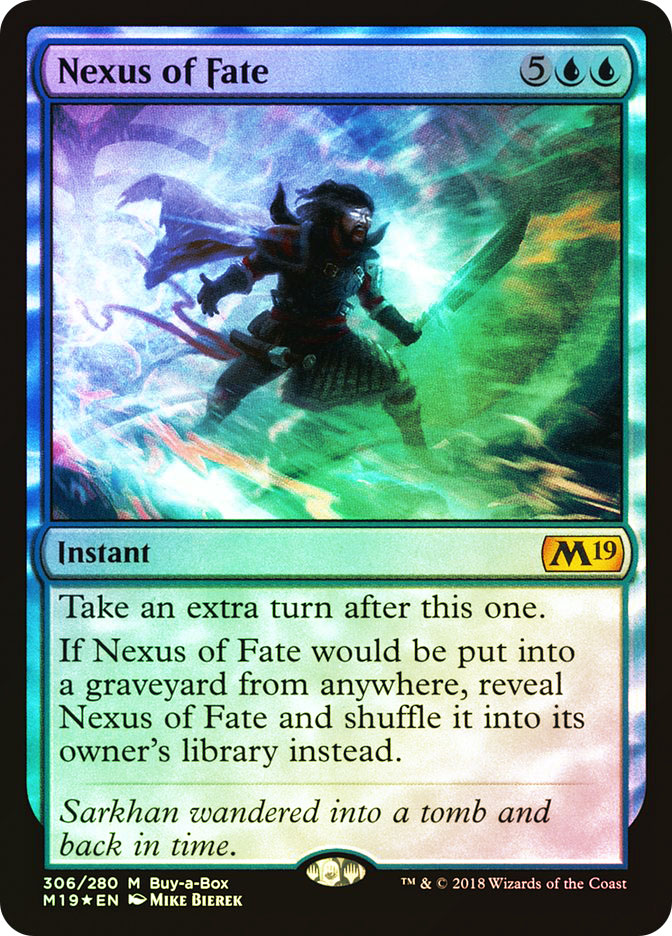One of my biggest strengths as a Magic player is identifying what’s important in a Standard format and taking appropriate steps to make sure I’ll be advantaged at my next event. That’s why today we’re going to go through my entire thought process when it comes to War of the Spark Standard, and what I was thinking about when I was deciding what to submit for my Magic Pro League Weekly match for this upcoming weekend. You’ll find out what information I consider valuable, what I discard, and how I approach a format that hasn’t found its footing yet. This one’s a doozy!
The Heart of Standard: Card Advantage
Standard isn’t like other formats. You can’t just throw a few more hate cards in your already existing deck and call it a day. Sure, there are a few cards like The Elderspell, but it’s not going to be enough to swing a matchup that you’re heavily disadvantaged in. That’s because the most important resource in Standard is card advantage, and the main source of card advantage is from permanents that produce it. If you’re extremely disadvantaged on the permanent front, no single sideboard card is going to swing the match.
It doesn’t really matter what deck we’re talking about; card advantage most likely plays an important role in the way it’s designed. Mono-Red Aggro has Experimental Frenzy. Mono-Blue Aggro has Curious Obsession. Mono-White Aggro has History of Benalia. Jeskai SuperFriends has Teferi, Hero of Dominaria.
Even Gruul Aggro has Rekindling Phoenix. The firebird might not seem like card advantage on the surface, but it is when an opponent has to use two cards to deal with it. That’s what we like to call virtual card advantage, since it’s not technically drawing you a card, but it is allowing you to be up on resources. The same can be said about Izzet Phoenix’s jump-start cards. They may not gain true card advantage, but they mitigate flood by discarding excess lands; hence, they produce virtual card advantage.
Since both inherent and virtual card advantage are so important, the way we try to counter our opponent’s strategies is by focusing on our cards lining up well against theirs. This could mean permanents they don’t have good answers to or having the precise interaction for the cards they play. However you want to look at it, Standard is about trying to get your cards to line up well against theirs while also getting their cards to line up poorly against yours.
This means there are two things going on, since we supply our decks with both proactive and reactive cards. Sometimes our proactive cards will do well being reactionary and our reactive cards become proactive. This way of thinking helps explain why cards like Whirler Virtuoso and Lightning Strike are so damn good. They can play multiple roles while maintaining their efficiency.
It’s not enough for just one of our styles of cards to be good. Let’s say our removal sucks, but our threats are good. When this happens, we get our opponent low but lack the means to close the game out when they stabilize. We also lose horribly in this situation if we ever stumble, causing us to end up on the back foot. This is why there’s a hyper-aggressive deck every new season that never finds it footing, but a slightly slower model does.
Other times we have a good suite of reactive cards, but so do they, and we end up not being able to gain enough advantages with our proactive elements. In these games, we often “flood out,” since they will most likely be gaining inherent and virtual card advantage on us because we were unable to do that ourselves effectively with our proactive elements. This is the main reason why Grixis isn’t good even though so many players want it to be. The proactive elements are just not good enough, causing the deck to never really find a steady stream of advantage.
Differentiating Active and Stagnant Metagames
Now that we’ve defined what’s important in Standard, let’s take a look at how these two elements ebb and flow within it. Usually when a new set is introduced to Standard, the format is in flux, since players are trying out all the new proactive and reactive cards. It makes sense too, as it’s tough to predict what needs answering when everyone has a different opinion of the power level of so many of the new cards. We often see the most unusual games in these stages of the format’s development, as there’s such a high number of cards being used with dozens of unique archetypes and players using wildly different cards within each one. Cards aren’t lining up smoothly, so the games play out in unusual ways.
Sometimes it’s spectacular to watch and play. Other times, it’s rather anticlimactic.
As the format moves forward, certain strategies will become obsolete as they’re deemed suboptimal relative to other cards and decks. This whittles down the format until only the best decks are left and the entire world has spent time tuning them together. This is when a format is at its slowest level of development, since there’s little to improve upon. We know what decks and cards to expect, and it’s very rare that something catches people off-guard. Cards interact in a smooth way as both players know exactly what each other’s deck are capable of.
Aggressively and Defensively Slanted Midrange
Right now, we’re in a quick-shifting Standard. New decks are popping up daily and there’s still so much for us to still explore. Since this is the case, it’s wise to seek out a proactive gameplan. The best-case scenario would be to find a deck that lines up its proactive cards well against the other proactive elements and also makes a high number of the reactive cards being played line up poorly.
For me, this is most commonly found in a midrange deck that supports four to six reactive spells in the maindeck. As the format moves forward, I’ll be more inclined to increase that number to eight to ten reactive spells once I’m comfortable in a density that high being efficient. Like I said earlier, the less predictable the metagame is, the more difficult it will be to react to it. That’s why I want to value interaction less and proactivity more.
This four-to-six versus eight-to-ten opinion isn’t just something I made up. It’s something I’ve realized through my research of previous metagames. Like a conspiracy theorist, I scoured the internet for variants of decks from specific iterations of Standard to see how decks evolved. Obviously there were many factors that went into each deck at the time, but I did have a very important takeaway – midrange decks can be broken down into many subsets, but the most common are aggressively slanted and defensively slanted.
An aggressively slanted example:
Creatures (14)
Planeswalkers (8)
Lands (26)
Spells (12)

And a defensively slanted example:
Creatures (20)
- 2 Gonti, Lord of Luxury
- 2 Torrential Gearhulk
- 4 Glint-Sleeve Siphoner
- 3 Gifted Aetherborn
- 2 Walking Ballista
- 3 The Scarab God
- 3 Champion of Wits
- 1 Ravenous Chupacabra
Planeswalkers (1)
Lands (26)
Spells (13)

There are many things to take away from this discovery, but for today we’re just focusing on how these differentiate in relation to quick-shifting metagames. One day I’ll find the time to really break this topic down. Maybe I should write a book? “Standard Grinder: The Bard Narson Story.” Okay, the title needs some work, but the idea itself doesn’t seem terrible.
Anyway, it’s safe to say there’s a defined subset of decks people could show up with right now, but the difficult things to figure out are exactly how decks will be built and what the actual metagame percentages will look like. Without a solid guess on all these factors, my inclination is to lean as proactive as I realistically can, which means minimizing my maindeck interactive spells. This helps minimize the games where I draw too many interactive pieces that don’t line up with what my opponent is doing, which is a good thing when there are these many variables to work with.
Format-Specific Context
So now that I have a core set of beliefs on what’s important to value and have selected what type of metagame I believe I’ll be dealing with, I can finally give context to the format and start trying to select an actual deck to register.
Like I said earlier, Standard is seemingly all over the place. Week 1 we saw decks like Bant Midrange and Esper Control do well, but those strategies are starting to drop off the map. Izzet Phoenix has been putting up decent results now that Nexus of Fate strategies are deemed bad, but currently there’s not a high density of pilots for the archetype. This past week we’re starting to see variants of SuperFriends decks sprout up all over the place. The only constant has seemed to be the resilience of Mono-Red Aggro, but that can easily be explained.
The only real takeaway up to this point is that things are all over the place and new technology is continually being added to the format. To start breaking this down, we must try to understand how information travels and see if we can predict where the masses will go in the short-term future.
Twitter has revolutionized how the community shares decklist information now that Magic Online deck dumps are less useful. This is, of course, because many players have left MTGO for Magic Arena and that client has yet to share decklists. Twitter is also a great tool for players and content creators to get their ideas out, and attaching their ideas to the Twitter account @ArenaDecklists has helped broaden their reach.
Almost daily someone shows off a new deck, and a few times a week we’ll see a sideboard guide attached to it. This is wonderful for players just wanting to try new decks, but this free-flowing form of sharing information is allowing way more people to help in the process of working on unique concepts like Jeskai and Esper SuperFriends or Four-Color Dreadhorde strategies, for example.
Planeswalkers (18)
- 2 Karn, Scion of Urza
- 1 Teferi, Hero of Dominaria
- 4 Teferi, Time Raveler
- 3 Saheeli, Sublime Artificer
- 4 Narset, Parter of Veils
- 4 Sarkhan the Masterless
Lands (25)
Spells (17)
Sideboard

Planeswalkers (19)
- 4 Teferi, Hero of Dominaria
- 2 Dovin, Hand of Control
- 1 Liliana, Dreadhorde General
- 4 Teferi, Time Raveler
- 3 Kasmina, Enigmatic Mentor
- 4 Narset, Parter of Veils
- 1 Ugin, the Ineffable
Lands (25)
Spells (16)

Players won’t end up at the same place, though, at least not at first. It usually takes a strong finish for players to “respect” a deck enough to play it without changing cards. This is usually seen right after an SCG Open Weekend where a lot of opponents will be playing card-for-card replicas of decks that did well in those events (at least for a day or two). Then players wanting to beat those decks will tune their strategies and eventually achieve those goals. Thus, the metagame shifts once more. All of this can happen in a span of just a week before it all starts over again, and trying to figure out what to play within these timeframes can be extremely difficult.
It’s also impossible for everyone to end up on the same conclusions, because from all my years of doing this, I’ve realized one very important fact about metagames: they involve people from every snapshot from the timeline. People stick to their Week 1 decks due to not having enough time to test, some players try to level the playing field, and others just really like Nexus of Fate. It doesn’t really matter what logic you want to put on it; everyone will land on every conclusion.
That’s what makes Magic so special. You can’t be right against everyone, because at the end of the day, the person whose cards interact the best in the matchup will have the advantage. Just because you brought the best deck to the room doesn’t stop you from running into a terrible matchup because that person “didn’t get the memo.”
The more variables presented in a metagame, the less likely reacting to them will be successful. What we really should be looking for is a powerful proactive strategy that potentially exploits a hole in the overall metagame’s reactionary spells. Keep in mind this proactive element must be able to go toe-to-toe with other decks’ proactive elements as well. Just because no one is playing sweepers doesn’t mean your Rat Colony deck is now good!
There are various ways to go about figuring these things out and a plethora of ways to execute the plan. Sometimes it’s as simple as playing a card like Legion Warboss in the sideboard of Jeskai SuperFriends. It’s an unexpected element that an opponent will most likely not be ready for. That’s as long as they don’t have a proactive element that trumps it. A good example of this is bringing in the card in the mirror, where it’s clear they don’t, and not against the Four-Color Dreadhorde deck that played the explore package and Vraska, Golgari Queen. This is a matchup where you want your reactionary cards to do the heaving lifting for you, since your proactive elements will not trump theirs.
A more drastic approach is playing an entire strategy designed to exploit as much of the predicted metagame as possible. Again, it’s best for this strategy to be proactive, since you need your cards to line up well against theirs if it’s not an expected matchup, and most of the time reactionary strategies have a very difficult time beating unexpected elements due to the “threats beat answers” paradigm.
So what is a good example of a proactive strategy that exploits the predictability of this format? Well, let’s take a look at what the majority of the predicted metagame looks like. Keep in mind that, for the sake of this article, I’m looking at what I expected this weekend for my Magic Pro League Weekly matchup.
Jeskai SuperFriends
Planeswalkers (18)
- 2 Karn, Scion of Urza
- 1 Teferi, Hero of Dominaria
- 4 Teferi, Time Raveler
- 3 Saheeli, Sublime Artificer
- 4 Narset, Parter of Veils
- 4 Sarkhan the Masterless
Lands (25)
Spells (17)
Sideboard

Early in the week, John Rolf and many other members of the MPL tweeted about the power of Jeskai SuperFriends. The deck got a lot of attention and many others worked on the deck. I streamed a decent amount with this deck and thought it might just be the best deck in the metagame. Little did I know that Team Lotus Box was about to refine the archetype in under a week and ride it all the way to a victory at SCG Syracuse.
This deck uses planeswalkers as its proactive elements and cheap red-based removal as its reactive spells against other creature decks. This strategy is great since the best way to fight planeswalkers is to get creatures onto the battlefield and attack them. The best card to fight the mirror at the time was Spell Pierce, which I expected every list to play.
Like I said earlier, Legion Warboss is the perfect mirror match hate card, as it’s great against a mirror’s proactive and expected reactive elements after sideboard.
Mono-Red Aggro
Creatures (20)
- 4 Fanatical Firebrand
- 4 Ghitu Lavarunner
- 4 Goblin Chainwhirler
- 4 Viashino Pyromancer
- 4 Runaway Steam-Kin
Planeswalkers (2)
Lands (20)
- 20 Mountain
Spells (18)

Mono-Red Aggro is in a unique place in current Standard. It’s good, but honestly I don’t think it’s great. The reason why it’s doing so well is that the format is still trying to figure itself out and this deck is exploiting that. Once things settle down, I expect Mono-Red to once again just be another deck in the metagame and I would be shocked if it continues to put up the absurd results that it has been.
That said, I still think it will be highly played, as it’s a great deck to just pick up and play for those who feel lost as well as a deck many players just enjoy playing and have access to.
Other Options
After that there’ll be a smattering of Izzet Phoenix, Azorius Aggro, Esper Midrange, Bant Midrange, Four-Color Dreadhorde, Esper Control, and whatever else. Sometimes it’s important to break these down further, but it’s difficult to do in a quick-shifting metagame, so I don’t really bother myself for it. What’s important is looking at this list and trying to find something getting ignored that sneaks right into the expected metagame.
One of the first things that jumps out at me is planeswalkers will be heavily prioritized, so selecting a deck with them must have a very good reason behind it. At this point, I must give value to the SuperFriends strategies and then decide if fighting against the hate is worth it. Sometimes it is but other times it’s not. If they’re great, and I do think they are, then by choosing to select a different deck I must value it very highly, including against these strategies and also those that may be well-positioned against them.
This leads me to believe that a threat-based strategy that goes wide might be great. Teferi, Time Raveler and Narset, Parter of Veils both struggle against early threats, and there are plenty of those in the format that can fight through the mass removal. Azorius Aggro comes to mind.
Creatures (26)
- 4 Adanto Vanguard
- 4 Skymarcher Aspirant
- 4 Benalish Marshal
- 4 Dauntless Bodyguard
- 3 Venerated Loxodon
- 4 Hunted Witness
- 2 Law-Rune Enforcer
- 1 Tomik, Distinguished Advokist
Planeswalkers (2)
Lands (20)
Spells (12)

That’s not all, though, as both Selesnya and Gruul have threats that are great specifically against Teferi, Time Raveler and Deafening Clarion. Selesnya has access to Thorn Lieutenant and Saproling Migration, while Gruul has Legion Warboss and many creatures with riot. Both tend to be slightly underpowered strategies in a handful of matchups, but those decks don’t seem like they will be heavily played in the current metagame. (I’m talking to you, Sultai Midrange Golgari Blue!)
So if we believe Azorius Aggro, Selesnya Tokens, and Gruul Aggro have good matchups against expected SuperFriends strategies, we now have to consider them against Mono-Red Aggro, the other, more prominent deck in the metagame. While Selesnya is slightly favored, the other two feel fairly behind. This wasn’t the case for Gruul before Chandra, Fire Artisan was printed, but it is now, given the fact that this card is extremely tough to beat. Since that’s the case, it’s time to take a closer look at Selesnya Tokens.
Creatures (16)
- 3 Thorn Lieutenant
- 3 Emmara, Soul of the Accord
- 2 District Guide
- 4 Venerated Loxodon
- 3 Trostani Discordant
- 1 Tolsimir, Friend to Wolves
Lands (21)
Spells (23)

This is the list Zachary Kiihne used this past weekend in Syracuse, and even though the man seemingly plays this deck exclusively, the clock is often telling the right time – especially this week with such a great plan against both Mono-Red Aggro and SuperFriends strategies. Gideon Blackblade is another card that’s just amazing against these planeswalker decks, as it never dies to mass removal and puts a ton of pressure on the opponent. It also doesn’t get completely shut down by The Immortal Sun, since it will still become a creature on your turn.
I modeled my deck choice after Kiihne’s deck and this is what I registered for this weekend’s Magic Pro League.
Creatures (15)
- 4 Thorn Lieutenant
- 3 Emmara, Soul of the Accord
- 1 District Guide
- 4 Venerated Loxodon
- 3 Trostani Discordant
Planeswalkers (1)
Lands (21)
Spells (23)

This strategy really checks all my boxes for what I want to accomplish this weekend. It’s a proactive strategy with minimal reactionary spells in the maindeck and has a good game plan against the unknown. It’s also a strategy against Mono-Red Aggro after sideboard, since it has so many ways to remove permanents from the battlefield. One of the deck’s biggest weaknesses, Deputy of Detention, doesn’t seem to be seeing a lot of play, and the deck has many ways to fight against other forms of mass removal, especially when it comes in the form of Deafening Clarion thanks to Venerated Loxodon.
I understand this article took a very long time for me to effectively just say that I thought Selesnya Tokens was a good choice for last weekend, but I really wanted to take the time to actually show you how I think about things and what I put value on. Magic’s a very difficult game and it gets even more complicated when you add the metagame element to it. I hope this look in was educational and that you’re able to take something away from it when you’re trying to figure out what to play next tournament.
If you want a hint for this weekend, don’t play Gruul Aggro. It was probably a very good choice to play on Arena for the first couple of days of this past week, but it will miss its window of being phenomenal for the weekend as people slowly adjust to it. I don’t know what I’d play this weekend just yet, but I will be playing in the Fandom Legends tournament on Twitch today, so head over and see if I found any developments.



